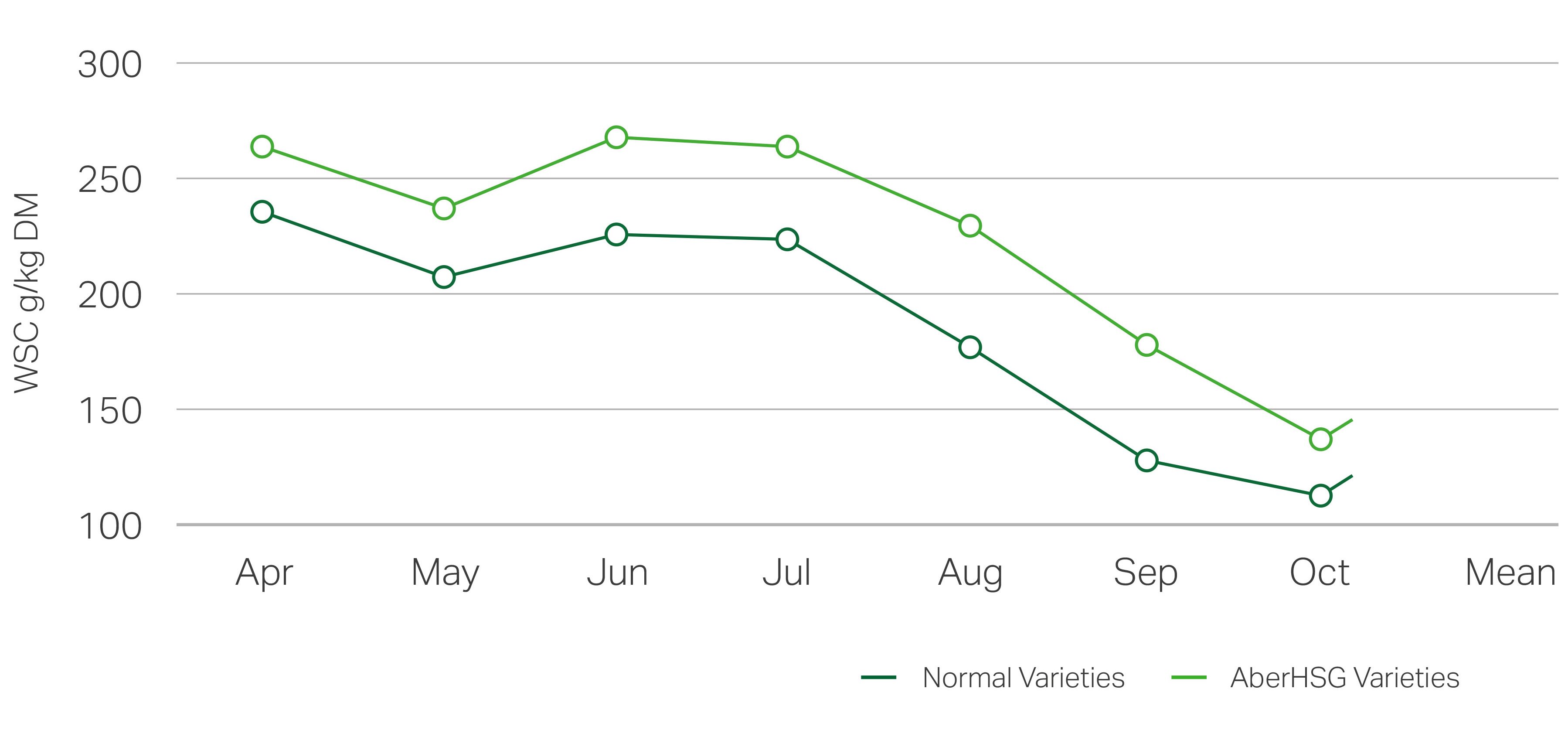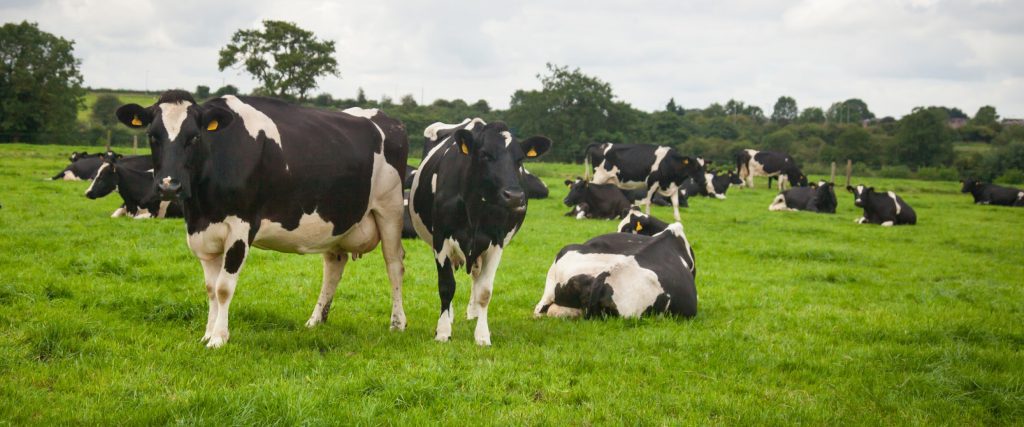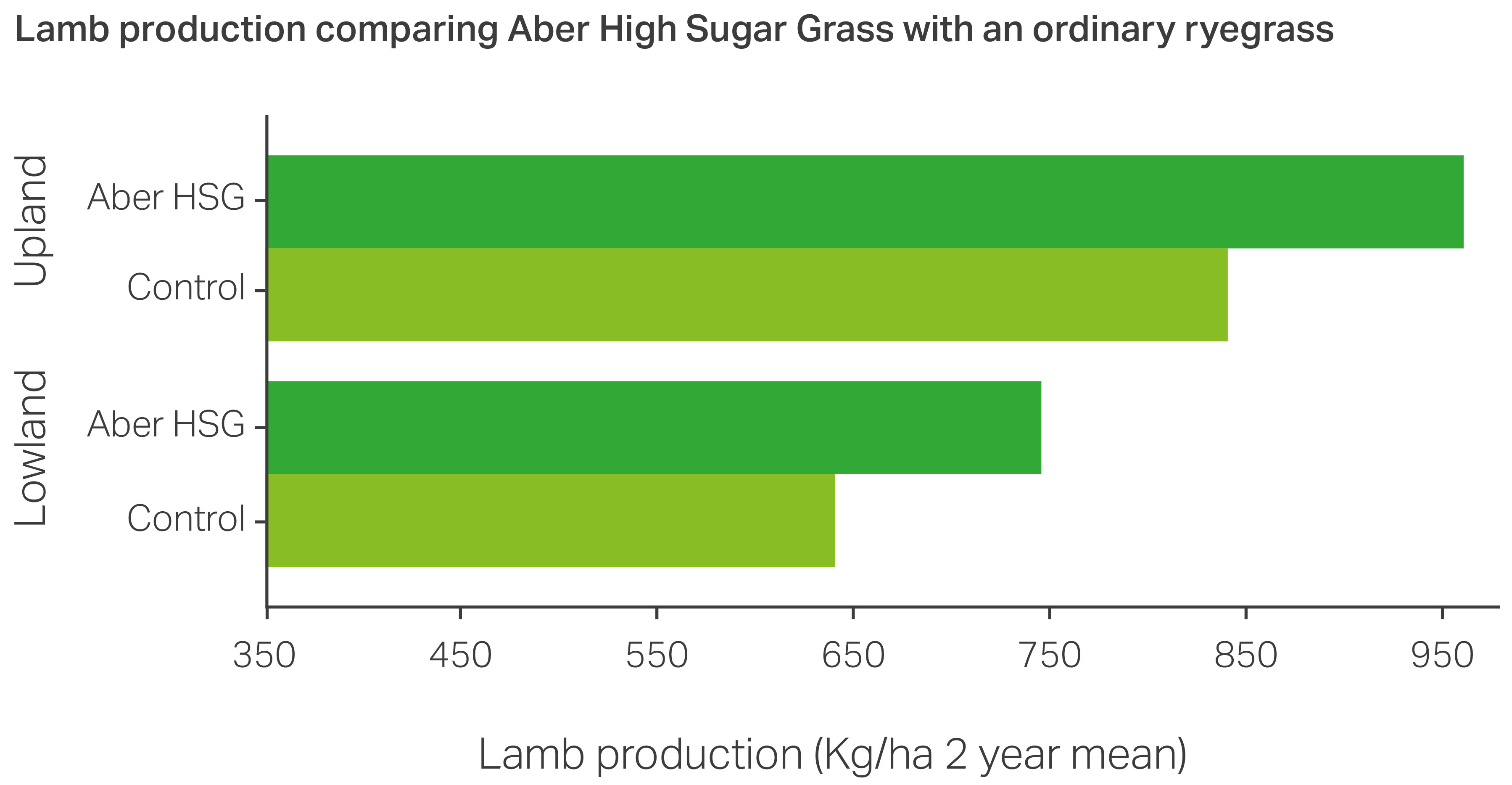Aber High Sugar Grass varieties (Aber HSG) are identifiable by the ‘Aber’ prefix and feature strongly in the Recommended Grass & Clover Lists. They will perform outstandingly in high-performance grass mixtures for grazing and cutting, for all ruminant species.
Quality forage options with Aber HSG grass seed
These high sugar ryegrasses are bred at the Institute of Biological, Environmental and Rural Sciences (IBERS) Aberystwyth University, where the ambition to achieve nutritional quality – alongside dry matter yield and strong agronomic performance – was first conceived.
The IBERS programme links grass breeding with animal performance and continues to produce new and improved varieties, year on year.
Average water soluble carbohydrate level

Data from IBERS' long-term trial: Average WSC over five years, seven cuts per year, three HSG varieties (AberDart, AberStar, AberMagic) and two normal varieties (Premium, Talbot).
Aber HSG – the key difference
- Contains higher levels of water-soluble carbohydrate (WSC or sugar) than conventional ryegrasses
- Provides increased readily available energy to feed fibre-digesting rumen microbes
- More active rumen microbes convert more forage protein into milk or meat, with less being wasted
Aber HSG – performance benefit
- Higher dry matter yields from grazing or cutting
- Improved dry matter (DM) intakes from enhanced fibre digestion and greater palatability
- Higher milk yields or growth rates resulting from more efficient forage protein conversion
Aber HSG – environmental benefit
- In zero-grazing trials involving early, mid and late lactation dairy cows, the amount of feed nitrogen lost in urine was reduced by up to 24% in animals fed HSG
- Reduced nitrogenous waste resulting from more efficient forage protein conversion
- Lower emissions of ammonia
Trial Results
Aber HSG for milk production
Accumulated studies at IBERS and on commercial dairy farms have shown that grass protein is used more efficiently when extra energy is provided by feeding HSG varieties.
- 6% more milk per cow over a grazing season
- DM intakes increased by 2 kg/cow/day
- 3% improvement in diet digestibility
Aber HSG for beef production
Grazing trials and companion zero-grazing trials at IBERS have shown that when extra energy is provided to beef cattle by feeding our HSG varieties, grass protein is used more efficiently, and performance is enhanced.
- DM intakes increased by 25%
- 20% high liveweight gains
- Slaughter weights reached earlier

Aber HSG for lamb production
Performance in lambs grazing this ryegrass was higher in upland and lowland situations.
- Higher forage intakes
- 20% higher liveweight gains
- 20% higher sward carrying capacity

High Sugar Grass reduces environmental impactReductions in nitrate leaching (4-6%) and lower ammonia losses to the atmosphere (7-11%) contribute to a significantly lower carbon footprint when cows graze Aber HSG swards, according to the CLEANER COWS* modelling study. When combined with improved manure management the carbon footprint per litre of milk production can be as much as 40% lower. * Soteriades, A., Gonzalez-Mejia, A., Styles, D., Foskolos, A., Moorby, J. and Gibbons, J. (2018). Effects of high-sugar grasses and improved manure management on the environmental footprint of milk production at farm level. Journal of Cleaner Production. 202 (1), 1241-1252. |
The science behind Aber High Sugar Grass
This cutting-edge grass range has been developed to remedy the imbalance between readily available energy and protein.

